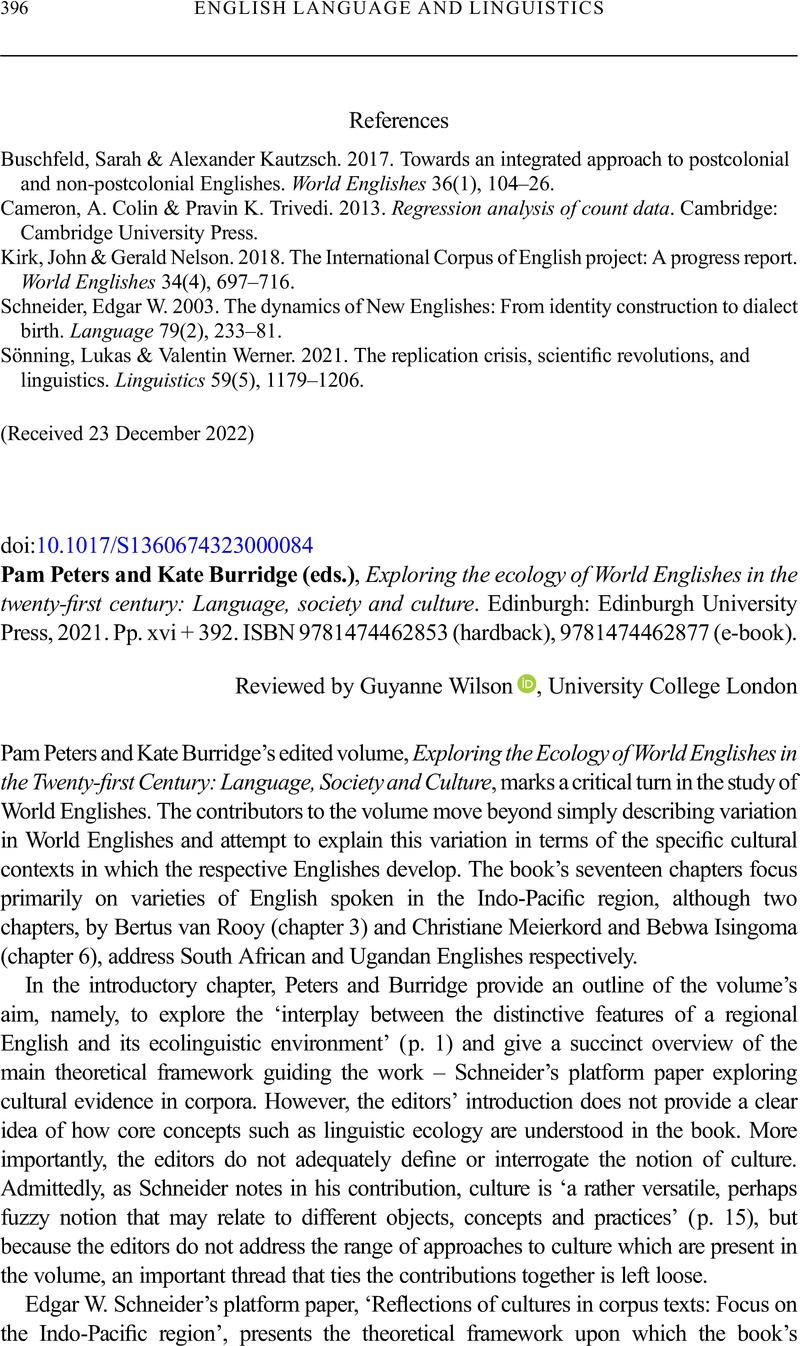No CrossRef data available.
Article contents
Pam Peters and Kate Burridge (eds.), Exploring the ecology of World Englishes in the twenty-first century: Language, society and culture. Edinburgh: Edinburgh University Press, 2021. Pp. xvi + 392. ISBN 9781474462853 (hardback), 9781474462877 (e-book).
Review products
Pam Peters and Kate Burridge (eds.), Exploring the ecology of World Englishes in the twenty-first century: Language, society and culture. Edinburgh: Edinburgh University Press, 2021. Pp. xvi + 392. ISBN 9781474462853 (hardback), 9781474462877 (e-book).
Published online by Cambridge University Press: 14 April 2023
Abstract
An abstract is not available for this content so a preview has been provided. Please use the Get access link above for information on how to access this content.

- Type
- Book Review
- Information
- Copyright
- Copyright © The Author(s), 2023. Published by Cambridge University Press
References
Bruthiaux, Paul. 2003. Squaring the circles: Issues in modeling English worldwide. International Journal of Applied Linguistics 13(2), 159–78.CrossRefGoogle Scholar
Cheshire, Jenny, Kerswill, Paul, Fox, Sue & Torgersen, Eivind. 2011. Contact, the feature pool and the speech community: The emergence of Multicultural London English. Journal of Sociolinguistics 15(2), 151–96.CrossRefGoogle Scholar
Deuber, Dagmar, Biewer, Carolin, Hackert, Stephanie & Hilbert, Michaela. 2012. Will and would in selected New Englishes: General and variety-specific tendencies. In Hundt, Marianne & Gut, Ulrike (eds.), Mapping unity and diversity world-wide: Corpus-based studies of New Englishes, 77–102. Amsterdam and Philadelphia: John Benjamins.CrossRefGoogle Scholar



